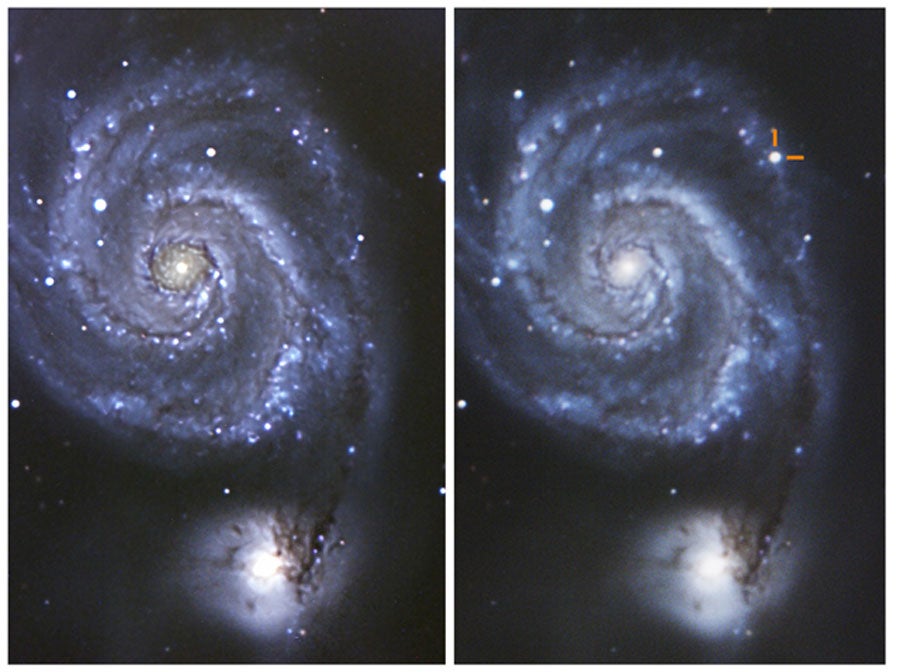The image shows the Whirlpool Galaxy (M51), a spiral galaxy 23 million light-years away. “The detail captured all across this extended infrared image really whets our appetite for getting these sensors into cameras at newer, much larger telescopes,” said Donald N. B. Hall of the University of Hawaii Institute for Astronomy (IfA). “The level of detail revealed by digitally zooming in anywhere in the 16-megapixel image is truly incredible.”
This sensor boasts 16 times the pixel count of an earlier sensor developed by the same team and installed on the Hubble Space Telescope during the astronauts’ last repair mission. It also has four times the pixel count of the largest infrared sensors now in use at telescopes around the world.
While the 16-megapixel count is comparable to commercial imagers in today’s professional digital cameras, infrared sensors used for astronomy also must overcome two formidable technical challenges: The pixels must be sensitive to infrared colors, and they must be big enough to match the huge magnification of the image from a large telescope.
The H4RG-15 development, sponsored by the National Science Foundation, has overcome these challenges through an academic-industrial partnership that draws upon the combined expertise of the IfA, Teledyne Scientific and Imaging, GL Scientific, and ON Semiconductor. This latest sensor is the culmination of a 20-year, $15-million effort that has developed five generations of increasingly larger and more powerful infrared sensors in the HgCdTe (mercury-cadmium-telluride) Astronomical Wide Area Infrared Imager (HAWAII) series.
To overcome the first of these major challenges — that the silicon used to fabricate visible imagers is blind to infrared light — infrared-sensitive crystals must be electrically connected to each of the 16 million pixels.
The second challenge, matching the image scale at the focus of a large telescope, means that the pixels must be huge — several hundred times that of the pixels in an iPhone — resulting in one of the largest silicon chips ever produced.
The HAWAII-4RG-15 pushes the limits of current and foreseeable technology. Larger sensors can likely be constructed only by assembling mosaics of individual arrays, much like tiling a floor. With this technique, 64-megapixel and even gigapixel-class infrared sensors should be possible. GL Scientific, a Hawaii high-tech company founded by former IfA astronomer Gerard Luppino, is a world leader in mounting the sensors into packages and assembling these into mosaics.
The Infrared-Optical (IO) sensor development program is run out of the IfA’s Hilo facility on the Big Island of Hawaii, where Hall is located. “These detectors are vital to the long-term success of the James Webb Space Telescope and other upcoming space astronomy missions,” he said. “They also greatly improve the infrared sensitivity of ground-based telescopes such as those on Mauna Kea today and are critical for the coming generation of 30-meter-class telescopes, including the Thirty Meter Telescope planned for Mauna Kea.”










